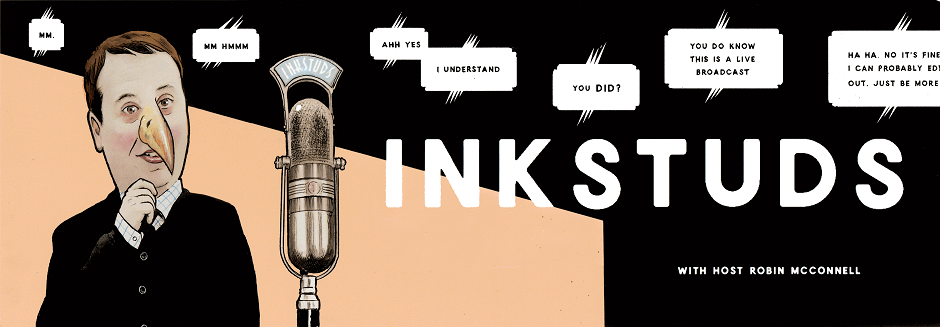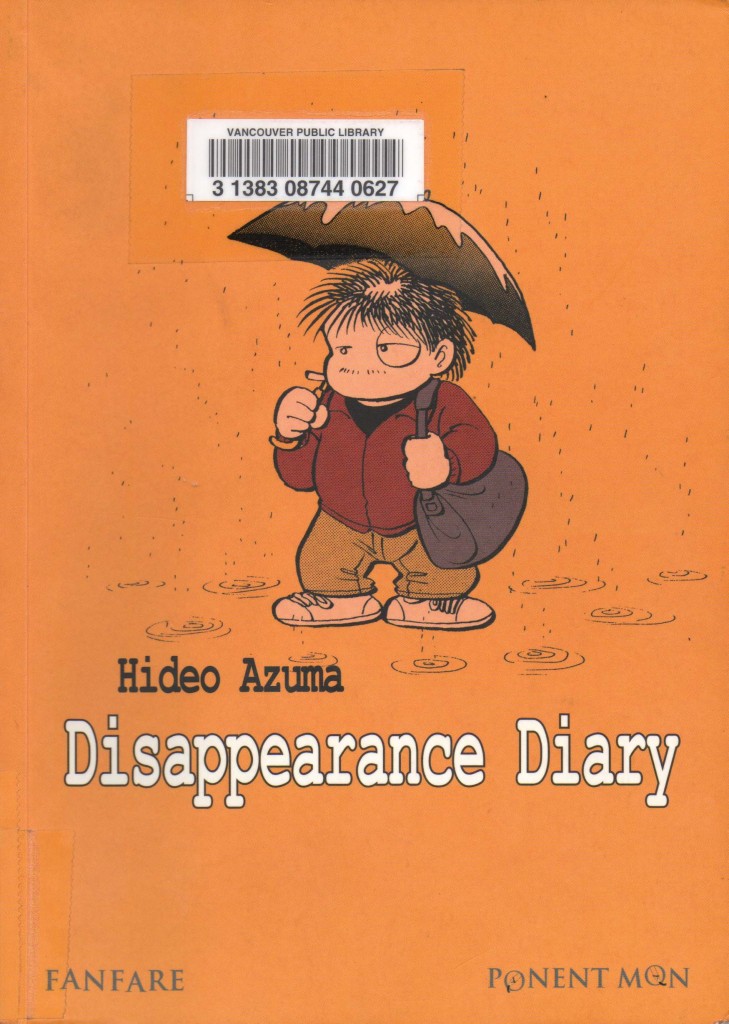Disappearance Diary by Hideo Azuma
Published by Fanfare/Ponent Mon 2008
When cartoonists over here talk about cartoonists over there, there being Japan, one of the first things that gets talked about, is the intense pressure a Japanese manga artists routinely works under. The output of Manga artists is insane, often working on several weekly or monthly series simultaneously, sometimes without the support of a team of assistants. Added to the heavy workload are the pressures of dealing with interfering, controlling and demanding editors. We over here can only shake our heads and wonder why these cartoonists over there don’t simply crack under the strain. At least one, Hideo Azuma, did crack and he tells his story in the award winning Disappearance Diary.
A successful manga artist of the 70’s and 80’s (he is credited with the invention of Lolicon manga, sexy drawings of underage girls, which is a whole other story he doesn‘t get into in depth). The series is about three periods in Azuma’s life when he dropped out. The first was in 1989 when he was homeless, sleeping rough in the woods through rain and snow on the outskirts of a mountain town. He was discovered by the police (some of whom are big fans of his art) and returned to his wife and job. The second takes place in 1992 when he fled to another town, eventually taking a job as a pipe fitter until his identity was once again discovered by the police and returned to his long suffering wife (who appears as a rather incidental character, who works as his art assistant. More difficult personal confrontations with his wife are glossed over as being “not funny“. She‘s also one of the few women in the book not drawn in a Lolita style). He continues working as pipe fitter until he quits and goes back to manga. The last section finds him in 1997 facing up to his dependency on booze, the delusions and suicidal thoughts that sees him entering the Alcoholic Ward of a psychiatric hospital.
As you can imagine on the surface this is pretty painful, harrowing stuff, which the artist deals with portraying himself as a “cuteâ€, balding, manga style dwarf. His original idea was to draw his stories using funny animals to further remove himself from the trauma of the events but was convinced otherwise. At one point this mixing of cute drawing style with serious story topics may have put me off but I’m sure now we are all used to that with manga, (starting with Gen of Hiroshima about the aftermath of the nuclear bombing) so it’s no longer a problem. What is weird is that this comic is flipped to read right to left, no doubt to give us westerners a more comfortable reading experience. But now I’m so used to reading manga translated into English but unflipped, reading left to right, that switching back to my natural reading style was difficult at first!
Reading this book, you learn a lot about surviving while homeless in Japan (which despite the cold and wind he manages quite well on the cast-offs of Japan’s affluent society and makes it seem an attractive alternative to his working life), pipe-fitting, the evolution and tribulations of a working manga artist and his struggle with alcohol. He packs a lot of story into his polished, economical and sometimes beautiful artwork. What doesn’t translate is something that’s most important to Azuma; in an interview in the book he emphasizes how he wants his Disappearance Diary to be “funnyâ€. All things considered, it’s not funny but it is well worth reading.



Pingback: Sequential | Canadian Comics News & Culture
This is one of my favorite books ever! I’ve re-read it several times and I laugh out loud whenever I read it. The real events are not funny but Azuma presents the material with comic wit and his stripped down style which gives the reader the distance needed to laugh at these bleak situations.